Pallet Inverter Safety Tips for India Plants Facing cost-effective solutions for high-volume FMCG plants
In high-volume FMCG plants across India, the pressure is immense. You need to move products fast. But you also need to keep your people safe and your costs low. Manual pallet handling is a major bottleneck. It's slow, physically demanding, and a constant source of potential injuries and product damage. Every time a worker strains their back, or a pallet of goods is dropped, your bottom line takes a hit. These incidents lead to downtime, insurance claims, and damaged reputations. In a competitive market, these small, recurring problems can quickly erode your profitability and make it hard to scale. A pallet inverter seems like a great solution. It automates the process of transferring loads, saving time and preventing injuries. But choosing and implementing one isn't simple. How do you guarantee absolute safety for your team while ensuring the solution is truly cost-effective and doesn't introduce new problems? It requires a specific strategy.
To ensure pallet inverter safety in high-volume Indian FMCG plants, focus on a cost-effective strategy that includes selecting machines with robust, built-in safety features like safety fences and light curtains. Prioritize comprehensive, ongoing operator training tailored to your specific workflow. Implement a strict, proactive maintenance schedule. And finally, foster a strong safety culture where reporting near-misses is encouraged. This approach minimizes risk without compromising the speed and efficiency your plant demands.
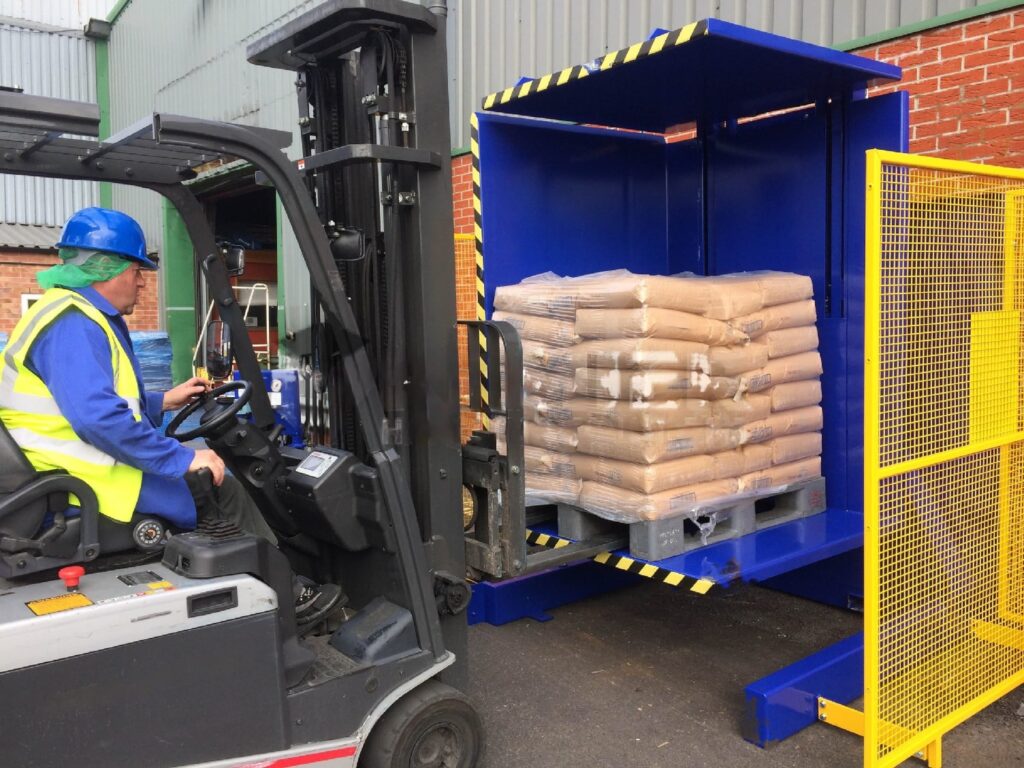
I've seen many plant managers in India and around the world grapple with this exact challenge. They invest in new equipment hoping for a quick fix, only to face new safety hurdles. The key isn't just buying a machine; it's about building a complete safety system around it. From my own journey, from engineer to factory owner, I learned that the best equipment supports your people and processes. Let's break down the essential steps to get it right.
How can you ensure operator safety without sacrificing speed?
You've invested in a pallet inverter to speed up your logistics. But now, safety protocols seem to slow everything down. Operators are worried about the powerful machinery, and management is concerned about meeting throughput targets. This conflict between speed and safety creates a dangerous culture. Operators might be tempted to bypass safety features to work faster, leading to catastrophic accidents. Or, if they work too cautiously, you lose the very efficiency gains you paid for, making the investment feel worthless. The solution is not to choose between safety and speed. It's to integrate them. By selecting the right machine features and designing an intelligent workflow, you can create a system where the safest way to work is also the fastest way.
You ensure operator safety without sacrificing speed by choosing pallet inverters with automated clamping, pressure controls, and integrated safety systems like light curtains and physical guarding. These features protect operators automatically, allowing them to work confidently and efficiently. Combining this technology with a well-designed work zone layout minimizes unnecessary movement and creates a seamless, fast, and secure process.
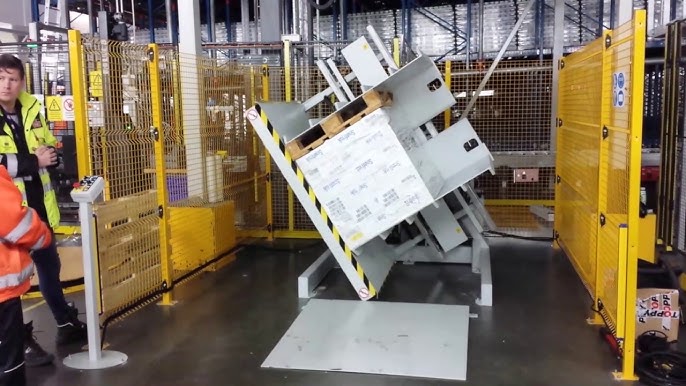
From my years designing and building these machines, I can tell you that modern safety features are not obstacles; they are enhancers of performance. When an operator feels safe, they work with more confidence and consistency. Their focus shifts from "not getting hurt" to "doing the job well." This is a huge psychological shift that directly impacts productivity.
Key Features for Integrated Safety and Speed
Let's look at the specific technologies that make this possible. I always advise my clients to look beyond the basic function of the machine and scrutinize its safety architecture.
- Automated Clamping Pressure: A smart pallet inverter doesn't just clamp. It senses the load and applies the perfect amount of pressure. This prevents operators from having to guess, which can lead to either crushed products (too much pressure) or dropped loads (too little). The automation removes a point of failure and speeds up the process.
- Light Curtains and Area Scanners: Think of these as an invisible shield. If an operator's hand or body crosses the beam while the machine is in a dangerous cycle, it stops instantly. This is far more effective than just an emergency stop button because it's proactive. The machine protects the operator, so the operator can focus on loading and unloading efficiently.
- Physical Guarding with Interlock Gates: In a high-volume FMCG plant in India, the environment can be chaotic. Physical fences are non-negotiable. They create a clear "no-go" zone during operation. The critical part is the interlock system. The machine will not start if the gate is open, and the gate will not open until the machine has completed its cycle and is in a safe state. This simple logic eliminates a huge category of potential human errors.
Workflow Design: The Missing Piece
Having the right tech is only half the battle. You need to design the workflow around it. I once worked with a large beverage plant in Pune. They had a great pallet inverter, but it was causing a bottleneck. The problem wasn't the machine; it was the layout. Forklifts were queuing in the same space as operators preparing the next pallet.
We redesigned the area to create separate inbound and outbound lanes. We positioned the control panel so the operator had a clear view of the entire work zone without needing to move. This simple change in workflow, combined with the machine's safety features, cut their cycle time by nearly 30% and eliminated all near-miss incidents in that area.
Here's a breakdown of how safety features contribute to speed:
| Safety Feature | How It Increases Speed |
|---|---|
| Light Curtains | Allows for faster loading/unloading by stopping the machine only when necessary, no manual checks needed. |
| Automatic Pressure Control | Eliminates manual adjustments and guesswork, reducing cycle time and product damage. |
| Interlocked Fencing | Gives operators confidence to work quickly outside the cage, knowing the machine is secure. |
| Dual-Hand Controls | Ensures operator is in a fixed, safe position during clamping, which becomes a quick, second-nature action. |
Ultimately, safety and speed are two sides of the same coin. A safe operation is a smooth, predictable, and therefore fast operation.
Your procurement team found a pallet inverter that's 30% cheaper than the competition. It looks like a huge win for your budget, especially in a cost-sensitive market like India. But soon after installation, the problems begin. The machine breaks down frequently. Spare parts are hard to find. It damages products with inconsistent clamping. The 'cheap' machine ends up costing you a fortune in downtime, maintenance, and lost goods, completely erasing the initial savings. The true cost of a machine is not its purchase price; it's the Total Cost of Ownership (TCO). By understanding the hidden costs associated with low-quality equipment, you can make a smarter, more cost-effective decision in the long run.
The hidden costs of a 'cheap' pallet inverter in a high-volume FMCG plant include frequent downtime from poor quality components, higher maintenance expenses due to lack of local support and parts, increased product damage from imprecise controls, and higher energy consumption. These operational inefficiencies and safety risks quickly outweigh any initial savings on the purchase price.
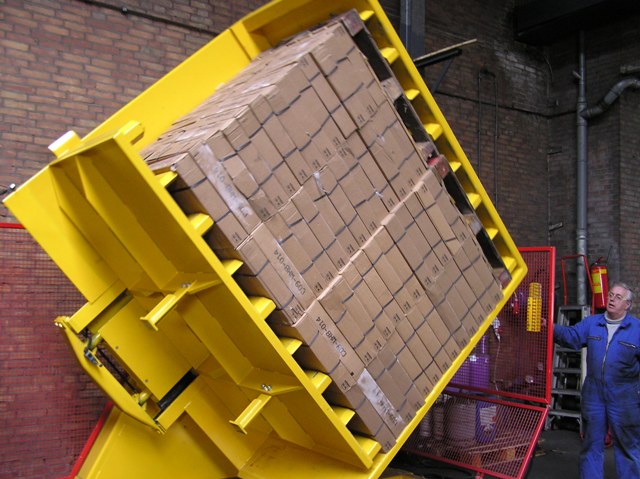
I learned this lesson the hard way early in my career. We were trying to win a contract and to lower our price, we used a cheaper hydraulic power pack from an unknown supplier. We won the deal, but it was a disaster. The unit failed within six months at the client's site. The client was furious, and the cost of flying my engineers out, replacing the unit, and compensating for their downtime was more than our entire profit margin. I promised myself I would never make that mistake again. At SHJLPACK, we now talk about TCO from the very first conversation.
Deconstructing the Total Cost of Ownership (TCO)
A cheap price tag often hides expensive problems. When I consult with plant owners, I ask them to look beyond the initial invoice. Let's break down the real costs you'll face with a low-quality machine in a demanding, high-volume environment.
| Cost Category | Low-Quality Machine (The "Cheap" Option) | High-Quality Machine (The "Value" Option) |
|---|---|---|
| Downtime | Frequent breakdowns due to weak welds, inferior motors, and cheap electronics. Unplanned stops can halt an entire production line. | Designed with robust components (e.g., Siemens motors, Schneider electrics) for high-cycle use. Uptime is maximized. |
| Maintenance | Requires constant attention. Proprietary parts are hard to source, leading to long waits. Lack of local service support in India is common. | Uses standard, high-quality components available globally. Proactive maintenance is simple. We provide local support. |
| Product Damage | Jerky movements and poor pressure control can crush boxes, break bottles, and damage sensitive FMCG products. | Smooth, controlled rotation and precise clamping protect your goods. This is crucial for maintaining quality and brand reputation. |
| Energy Consumption | Inefficient motors and hydraulic systems draw more power, adding to your electricity bill – a major concern for any Indian plant. | Equipped with energy-efficient motors and smart power packs that only draw power when needed, directly reducing operational costs. |
| Operator Safety | Lacks essential safety features, or they are unreliable. Puts your team at risk, leading to potential accidents and legal issues. | Certified safety systems (CE/UL) are standard. Protects your most valuable asset: your people. |
A factory owner, whether in steel or FMCG, understands that equipment is a long-term asset, not a short-term expense. A rigorous analysis must be performed for every investment. The same logic must apply to logistics equipment in an FMCG plant. A machine running 24/7 in a high-volume Indian plant is under immense stress. A cheap machine is built for low-cycle, occasional use. It will inevitably fail under pressure. The initial 'savings' are just a down payment on future headaches and expenses. Investing in quality is the most genuinely cost-effective solution.
How do you properly train your team for maximum safety and efficiency?
You have installed a state-of-the-art pallet inverter with all the best safety features. But your team is still hesitant to use it, or they are using it incorrectly, creating new risks. This lack of proper training turns your expensive investment into a glorified paperweight. Worse, improper use can lead to accidents, damage the machine, and defeat the entire purpose of improving safety and efficiency. You can't just hand over the keys and hope for the best. The solution is a structured, continuous training program that goes beyond the user manual. It should be hands-on, specific to your plant's workflow, and build operator confidence, turning them into skilled experts who can use the machine safely and productively.
To properly train your team, implement a multi-stage program. Start with classroom theory on safety features and operational principles. Follow this with hands-on, supervised training using non-critical loads. Finally, certify operators only after they demonstrate proficiency and create a system for regular refresher courses and training new hires. This ensures safety and efficiency become ingrained habits.
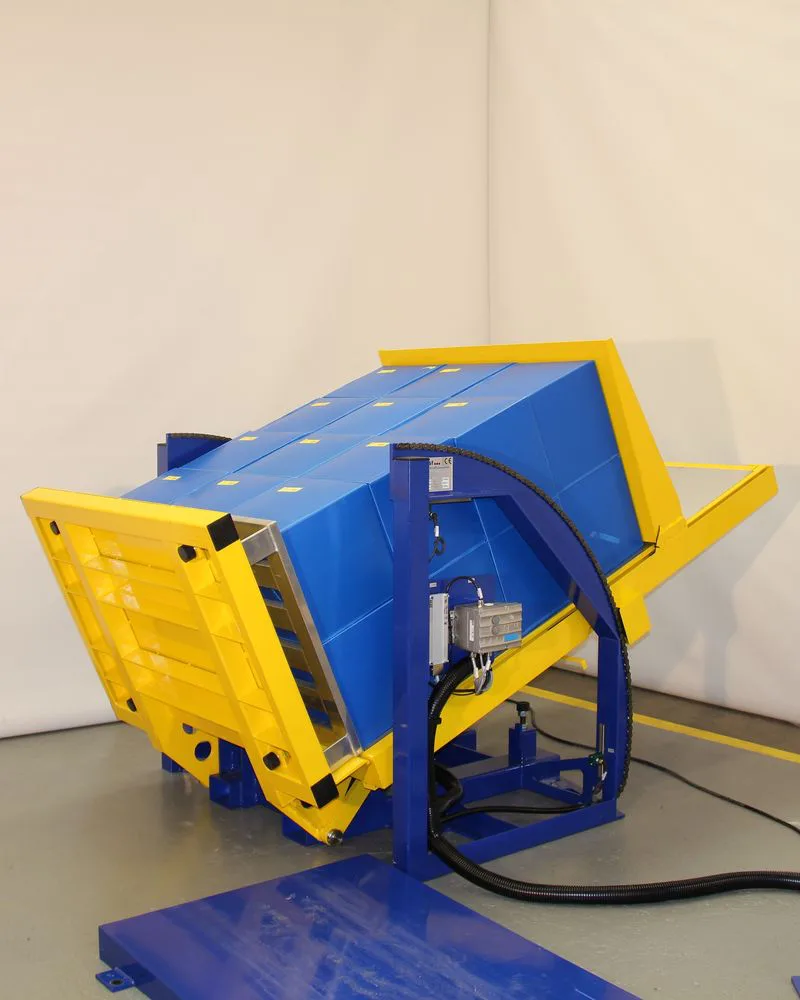
Training is something I am incredibly passionate about because it’s where technology meets humanity. You can have the best machine in the world, but if the operator doesn't trust it or understand it, you have nothing. I remember visiting a client's facility in India where a pallet inverter was being used at half its potential speed. The reason? The operators were never properly shown how the automatic clamping worked. They were manually jogging the clamps, fearing they would crush the product. A simple 30-minute training session unlocked the machine's full potential.
A Blueprint for Effective Pallet Inverter Training
A "one-and-done" training session during commissioning is not enough for a high-volume FMCG plant. The environment is dynamic; people change roles, and new people are hired. Your training program needs to be a living process.
Stage 1: The Foundation - Classroom & Theory
Before anyone touches the machine, they need to understand the 'why'.
- Safety First: Cover every safety feature in detail. Explain what the light curtains, interlocks, and E-stops do. Use videos and diagrams. Discuss potential hazards and the procedures to mitigate them.
- Machine Operation: Explain the control panel, different operating modes, and the sequence of a normal cycle.
- Load Knowledge: Discuss your specific products. How to handle different SKUs, weight limits, and load stabilities. This is crucial in FMCG with its wide variety of product types.
Stage 2: The Practice - Hands-On & Supervised
This is where theory becomes skill.
- Guided Walkthrough: The trainer should operate the machine first, explaining every step slowly.
- Supervised Practice: Let each trainee operate the machine under close supervision. Start with empty pallets, then move to stable, low-value loads.
- Fault Simulation: Safely simulate common issues. What happens if a light curtain is tripped? How do you perform a safe recovery? This builds confidence to handle real-world situations.
Stage 3: The Certification - Assessment & Authorization
Not everyone who is trained should be an authorized operator.
- Practical Test: Create a checklist of tasks the operator must perform flawlessly. This includes a pre-use inspection, a full operational cycle, and a proper shutdown procedure.
- Authorization: Only operators who pass the test should be given access to operate the machine. Their names should be listed on a visible authorization chart near the equipment.
- Refresher Training: Schedule mandatory refresher training every 6-12 months, and immediately after any safety incident or near-miss.
Here is a sample training checklist:
| Training Module | Key Learning Points | Status (Initial/Refresher) |
|---|---|---|
| Pre-Use Inspection | Check hydraulic fluid, safety sensors, guards, controls. | ☐ / ☐ |
| Safe Operation | Correct loading, proper use of controls, clear understanding of cycle. | ☐ / ☐ |
| Emergency Procedures | E-stop activation, manual pressure release, safe shutdown. | ☐ / ☐ |
| Load Specifics | Handling fragile vs. robust goods, max weight, load centering. | ☐ / ☐ |
Investing in this level of training sends a powerful message to your team: we care about your safety, and we trust you with this important equipment. That feeling of empowerment is the key to unlocking true efficiency.
What maintenance practices prevent accidents and costly downtime?
Your pallet inverter runs constantly to keep up with production. You don't have time to take it offline for maintenance. You follow the "if it ain't broke, don't fix it" philosophy. Then, a hydraulic hose bursts during a critical production run. The entire line stops. You have an oil spill to clean up, a machine to repair with expensive emergency parts, and production targets are missed. This reactive approach is a recipe for disaster and huge costs. The solution is to shift from reactive repairs to proactive and predictive maintenance. A structured maintenance plan, based on the machine's usage and manufacturer's recommendations, prevents most failures before they happen, ensuring reliability, safety, and saving you money.
To prevent accidents and downtime, implement a proactive maintenance schedule for your pallet inverter. This includes daily operator checks, weekly inspections of safety systems and moving parts, and monthly or quarterly servicing of hydraulic and electrical systems by trained technicians. Using a Computerized Maintenance Management System (CMMS) to track tasks and parts is key for high-volume plants.
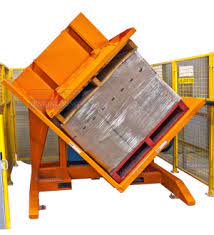
In heavy industries, predictive maintenance is not a luxury; it's a necessity. An unplanned shutdown of a key line can cost millions. While the scale is different in an FMCG plant, the principle is the same. Unplanned downtime on a key piece of equipment like a pallet inverter can have a domino effect on your entire logistics chain. As an engineer, I see maintenance as part of the machine's design. A well-designed machine is one that is easy to maintain.
Building a Robust Maintenance Program
A good maintenance program is layered, with different frequencies and levels of detail. It empowers your operators to be the first line of defense and uses your skilled technicians for more complex tasks.
Daily: Operator Pre-Use Checks (5 minutes)
This should be a simple, visual checklist that the operator completes before their shift.
- Visual Inspection: Look for any leaks, damaged hoses, or loose bolts.
- Safety Function Test: Activate the E-stop to ensure it works. Block a light curtain to confirm the machine stops.
- Cleanliness: Check that the area around the machine is free of debris and spills.
Weekly: In-Depth Inspection (30 minutes)
This can be done by a line leader or maintenance technician.
- Lubrication: Check and apply grease to all specified points.
- Electrical: Inspect control panel wiring for any signs of wear or loose connections.
- Hydraulics: Check hydraulic fluid levels and look for any weeping fittings.
- Mechanical: Check the tension and condition of chains or belts.
Quarterly/Annually: Professional Servicing
This is where a certified technician, ideally from your supplier like SHJLPACK, comes in.
- Hydraulic System Flush: Change hydraulic oil and filters.
- Component Testing: Test the performance of motors, pumps, and sensors against their original specifications.
- Software/Firmware Updates: Install any updates that improve performance or safety.
This structured approach transforms maintenance from a cost center into a value driver.
| Maintenance Task | Frequency | Responsible Party | Impact of Neglect |
|---|---|---|---|
| Check Safety Sensors | Daily | Operator | HIGH RISK - Complete safety system failure |
| Lubricate Chains/Bearings | Weekly | Maintenance Tech | Premature wear, jerky motion, motor failure |
| Check Hydraulic Fluid Level | Weekly | Maintenance Tech | Pump damage, slow operation, overheating |
| Replace Hydraulic Filter | Quarterly | Certified Tech | Contamination, valve failure, catastrophic breakdown |
| Inspect Structural Welds | Annually | Certified Tech | HIGH RISK - Structural failure, dropped load |
For a high-volume plant in India, I strongly recommend using a simple CMMS to schedule and track these tasks. It ensures nothing is forgotten and provides a valuable maintenance history for the machine. This data is gold for predicting future issues and managing spare parts inventory, turning your maintenance from a cost into a strategic advantage.
What is my ultimate insight on integrating these machines for long-term success?
You've followed all the steps. You bought a quality machine, you trained your team, and you have a maintenance plan. But you still feel like you're just managing a piece of equipment, not leveraging a strategic asset. This mindset means you miss out on bigger opportunities. Your pallet inverter solves one problem, but it isn't integrated into your larger goals of digitalization and continuous improvement. It remains an isolated island of efficiency. The ultimate solution is to view your pallet inverter not as a standalone machine, but as a data-generating node in your factory's digital ecosystem. By partnering with a supplier who understands this, you can unlock insights that drive improvements far beyond simple pallet swapping.
My ultimate insight is to treat your pallet inverter as a strategic partner, not just a purchase. Choose a supplier who provides not only a reliable machine but also a total solution. This includes integration support with your MES/ERP systems, data analytics for predictive maintenance, and ongoing consultation to help you adapt the equipment to your evolving business needs.
This is the part that truly excites me. I started SHJLPACK not just to sell machines, but to share the knowledge I gained on my journey from a factory employee to a business owner. I achieved my own success by helping my clients succeed, and that means thinking beyond the steel and hydraulics.
A CEO isn't just buying a machine; he is investing in capability. They want to deploy MES, IoT sensors, and data analytics. A modern pallet inverter should feed into that vision. In today's world, a machine that doesn't provide data is a missed opportunity.
From Machine to Strategic Asset: The Data-Driven Approach
Think about the data a pallet inverter can provide if it's designed with connectivity in mind:
- Cycle Counts: How many pallets are being inverted per hour, per shift? This is a direct measure of throughput. When connected to your MES, it helps you identify bottlenecks in real-time.
- Dwell Time: How long does a pallet sit waiting to be inverted? This data can highlight inefficiencies in your forklift traffic or upstream processes.
- Motor Current & Hydraulic Pressure: Monitoring these over time allows for true predictive maintenance. A gradual increase in motor current could signal a failing bearing weeks before it seizes up, allowing you to schedule a repair during planned downtime.
- Error Codes: When the machine stops, it shouldn't just be a red light. It should log a specific error code that tells you why it stopped. Was it a safety sensor trip? An overload? This data helps you identify recurring problems and address their root cause.
The Supplier as a Partner
This is why seeking a "strategic partner" instead of a "supplier" is so important. A true partner doesn't just deliver a machine and a manual. We at SHJLPACK believe our job starts at delivery.
| The "Supplier" Mentality | The "Strategic Partner" Mentality (Our Mission) |
|---|---|
| Sells you a machine. | Works with you to understand your operational goals. |
| Provides a standard user manual. | Offers customized training for your specific workflow and products. |
| Reacts to your calls when something breaks. | Proactively suggests maintenance and provides data for predictive analysis. |
| The relationship ends after the warranty expires. | The relationship evolves as your business grows, offering upgrades and consultations. |
When I started my own factory, I realized the immense value of partners who brought more than just a product. They brought ideas. They helped me see my own business in new ways. This is what I want to give back through SHJLPACK. Whether you are in a high-volume FMCG plant in India or a massive steel mill in Mexico, the principles are the same. Choose partners who are as invested in your success as you are. Your equipment should not only solve today's problems but also provide the data and flexibility you need to conquer tomorrow's challenges.
Conclusion
Ultimately, pallet inverter safety and cost-effectiveness come from a holistic approach: quality machinery, thorough training, proactive maintenance, and a partnership with your supplier. This ensures long-term value.


